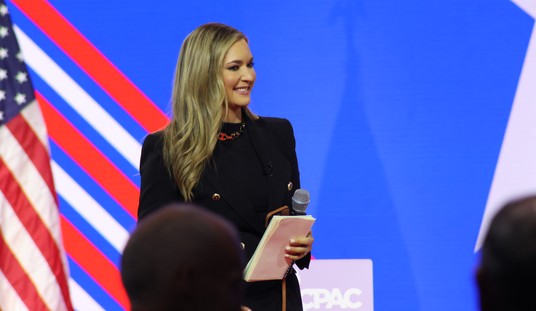Let’s start this topic with the latest in a long series of debunked claims resulting from studies that are later discovered to be either incompetently conducted or flat-out fraud. Reason’s Linda LeFauve dismantles one of the key bases for the supposed epidemic of “rape culture” on college campuses, a study published in 2002 by University of Massachusetts-Boston professor David Lisak. This study, LeFauve notes, has informed current White House policies on Title IX enforcement as well as documentaries and books on the subject of college rape. It had at least an indirect impact on Rolling Stone’s debunked UVA campus rape hoax from last December.
It’s also based on shoddy research and deception, as LeFauve discovered when researching the study. Despite claiming to have conducted the research himself, Lisak actually derived it from student theses on another topic entirely — adult survivors of child abuse, using non-random samples mainly consisting of UMB employees and non-resident students:
The survey instrument used to collect the data on sexual assault was the Abuse Perpetration Inventory. This is a long, detailed, and graphic instrument created by Lisak. There are seven pages of items that ask about childhood experiences of a sexually and physically violent nature. There are only five questions that ask respondents about sexual violence they, as adults, may have committed on other adults.
There were 1,882 subjects in the pooled data, men ranging in age from 18 to 71. Assuming they reflected the demographics of the university, most would have been part-time students, many of whom would also be holding down jobs away from campus. All would have been commuters.
Among these men, 120 had engaged in actions that meet the legal definition of rape or attempted rape, based on responses to an anonymous survey they completed. (Subsequently, Lisak refers to them all as rapists, although he does not indicate how many he’d classified as rapists and how many as attempted rapists.) Of those 120 men, 76 met Lisak’s definition of multiple offenders.
Lisak told me that he subsequently interviewed most of them. That was a surprising claim, given the conditions of the survey and the fact that he was looking at the data produced long after his students had completed those dissertations; nor were there plausible circumstances under which a faculty member supervising a dissertation would interact directly with subjects. When I asked how he was able to speak with men participating in an anonymous survey for research he was not conducting, he ended the phone call.
LeFauve’s exposure of this study — and Lisak’s manipulation of it — should be read in full. It’s impossible to excerpt within the bounds of fair use to capture the scope of LeFauve’s work. These are important points to highlight, though, as they go right to the heart of the presumptions on which “rape culture” accusations rest:
That none of the men in his paper had been charged with sexual assault has never been established. In fact, as he stated in his paper, in order to “avoid evoking defensive reactions in participants,” the survey specifically did not ask that question. Rather, “overwhelming evidence” of the hidden nature of subjects’ criminal activity is offered via separate studies which found incarcerated serial rapists committed more assaults than they’d been charged with by police. That is, Lisak uses confessions of convicted rapists as evidence for his assumption that the men in his paper had never been charged or prosecuted. …
There is, in fact, no foundation for the connection between Lisak’s paper and higher education. This point cannot be emphasized enough: Nothing about the studies from which he repurposed data depended on survey respondents being students, or acts they reported taking place while in college. Nothing in the research protocol indicates prospective respondents were even asked whether they were students when they agreed to complete very personal surveys in exchange for $3. There is not a single statement in the paper about assaults taking place on or near a campus; there is not a single reference to the campus environment.
It’s not the first time this administration has used manipulated data that conflicted with information provided by its own agencies to push a moral panic that supported its own political agenda. As I note in my column at The Fiscal Times, it’s starting to look like a pattern of deliberate demagoguery in order to impose even more government restrictions on liberty:
We saw some of this in the debate over the HHS contraception mandate, when policymakers arguing in favor of the mandate argued that women were being broadly denied access to contraception by schools and employers. They used anecdotal and narrowly based data in support of that point.
That ignored a much broader study published by the CDC in 2009 that entirely negated that argument. In a 26-year study of unwanted pregnancies – the very issue that HHS proposed to reduce through the mandate – the CDC found no evidence of a lack of access to birth control as a driver of unwanted pregnancies. “Contraceptive use in the United States is virtually universal among women of reproductive age,” the study noted, and “99 percent of all women who had ever had intercourse had used at least one contraceptive method in their lifetime.” …
From Barack Obama and Joe Biden on down, the White House has tossed around statistics supposedly from reliable studies of the issue, claiming that 1 in 5 women in college will be the victim of sexual assault. They have used those statistics to pressure colleges into abusing due process in Title IX enforcement actions, with horrendous outcomes for those falsely accused.
Every rape is a heinous crime, and every victim deserves justice. However, the numbers thrown out to justify this as a specific and acute crisis make no sense at all. Once again, the government’s own data rebuts the claims of a rising epidemic. The Department of Justice reported in December that the incidence of sexual assaults on female college students between 1995 and 2013 was 6.1 cases for every 1,000 students or 0.61 percent, which was lower than for non-students in the US (7.6 per 1,000). Both are orders of magnitude lower than the 20 percent figure used by the Obama administration. Half of the sexual assaults for college students took place away from where they lived, with presumably some significant part of those off-campus.
Note well that the period in which the DoJ got these statistics covers the same period of time in which Lisak developed his thesis. And that leads us to the political impact of these dishonestly provoked moral panics — and how we need to prepare ourselves to defend against them:
In other words, we have the perfect brew for yet another moral panic to cloud our collective judgment. Due process exists to protect people from mob rule and moral panics, as well as to protect us from those who would stoke those panics for their own political purposes. Claims of support from “studies” for extraordinary and yet oh-so-convenient claims need much more careful scrutiny – and perhaps much more pointed skepticism.







Join the conversation as a VIP Member